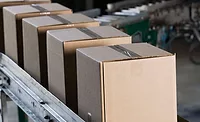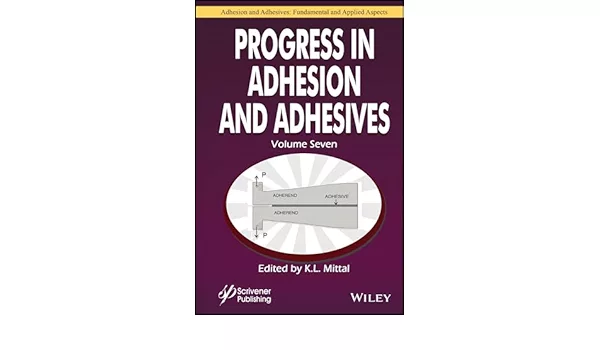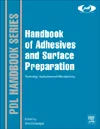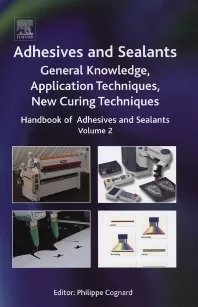Market Trends: The "Case" for the U.S. CASE Market: 2015-2016
The U.S. coatings, adhesives, sealants and elastomers (CASE) markets could grow at or slightly above GDP in 2016.






The U.S. is the world’s largest specialty chemicals market, estimated at $208 billion.1 As a subsector of this market, the coatings, adhesives, sealants and elastomers (CASE) markets accounted for over half, or $107 billion, in 2014.2 Industry performance since 2010 has largely been driven by a recovering macroeconomic environment. Improving trends in industrial production, consumer spending, and residential and commercial construction have driven increased demand since the Great Recession for CASE products; this higher level of activity is expected to continue through 2016.
In addition to revenue and volume growth, the industry is experiencing record lows in input costs. Petrochemicals are still among the most critical raw material, and industry profit margins have widened, impacted by the decline in oil and natural gas prices this year. What’s more, with no signs of production slowing, oil-derived raw material prices should remain low through 2016.
Despite recent financial gains however, market participants are all too familiar with economic cycles. They continue to strive for economies of scale and more manufacturing efficiencies, ensuring that M&A activity and market consolidation will continue as companies aim to gain a bigger share of the growing market through acquisition.
Lastly, while apprehension around research and development still exists, driven in part by ongoing environmental regulations (e.g., Clean Water Act, emissions of volatile organic compounds, or VOCs), companies continue to push for product innovation that addresses broader sector trends around environmental impact and sustainability, fuel efficiency, consumer health and awareness, and alternative energy.
A Rising Tide Lifts All Boats
Despite recent volatility in the public markets, key indicators in CASE-specific end markets—namely automotive, residential housing and commercial construction—have led to robust demand in 2015. U.S. auto industry fundamentals are solid; sales continue to accelerate, hitting a seasonally adjusted annual rate of 17.8 million in August—the strongest pace in more than a decade—and well above economist forecasts. In fact, in November 2014, economists at the University of Michigan were forecasting that the annual production rate for light vehicle sales would reach just 16.6 million.3 A number of factors are fueling the demand for new vehicles, including macroeconomic trends like strong job growth, low unemployment and high consumer confidence. In addition, a drop in prices at the gas pump, sales incentives, an attractive auto finance and leasing market, and relaxed underwriting standards for subprime auto loans have all contributed to demand as well.
The U.S. housing market has also continued to improve in 2015; housing starts are up 10% year-over-year, the highest since October 2007. In addition, existing home sales exceeded 5.5 million for the first time since February 2007; median days for a property on market are down 6% year-over-year. With the unemployment rate down to 5.1%, more jobs, steady income levels, and lower gas prices should lead to rising consumer confidence and demand for homes through 2016, even in the face of modestly higher mortgage rates.
Finally, according to a release by the U.S. Census Bureau, nonresidential construction spending is up 12.7% on a year-over-year basis, the strongest such growth in spending since April 2008. A variety of factors contribute to this trend, including job growth, an increase in recreation and business travel spending, and higher state and local government spending.
Apart from a stronger economic environment driving demand within these markets, other megatrends are at work where the usage of CASE products in certain areas is actually accelerating. Automobile manufacturers, for example, are under pressure to improve vehicle durability and reduce weight in order to achieve greater fuel efficiency and CO2 emission standards. One way to achieve these objectives is to replace welds and mechanical fasteners with structural adhesives.
Smaller, niche markets are also driving growth in certain CASE product sectors. For example, Fred Quinn, founder and former CEO and chairman of Quest Specialty Chemicals, believes aerospace, marine, and alternative energy like solar and wind energy are strong areas for the CASE markets, particularly for coatings, elastomers, and, to some extent, adhesives.
“Increasing production rates and profitability improvements at the OEMs and aftermarkets, combined with the need for new technologies to improve both quality and efficiency, are driving increased demand for coatings and elastomeric solutions,” he says.
Adhesives, sealants, coatings, and other compounds for alternative energy applications such as solar and wind power are also in high demand, especially as manufacturers seek to lower production costs, increase the durability and reliability of renewable energy devices, and protect against corrosion. Quinn says this trend is here to stay: “The drive for renewable energy is a sustainable political and social objective, which will require that CASE manufacturers deliver innovative product technology in order to improve the structural performance of wind, solar, biomass, geothermal, and hydropower devices.”
Healthy Profit Margins to Continue
Industry margins are being lifted by lower material costs, particularly for petrochemicals feedstocks derived from North American shale oil and gas production. Crude oil prices are undergoing similar pressure as well. In an effort to leverage a robust and growing supply of crude oil in a declining price environment, new capacity to produce ethylene and other petrochemicals are coming on line.
As a result, CASE manufacturers are benefitting and generating profit margins not seen in years. PPG, for example, was able to widen its gross margins by 100 basis points (bps) on a year-to-date basis when compared to the prior year due to the effects of lower raw materials costs (which account for nearly 75% of PPG’s cost of goods sold, in line with the industry average). The market seems to be accepting that raw material prices will continue to be at least stable, if not lower, through 2016 and that downward pricing pressure will persist across other areas of the supply chain as well.
Innovation Trumps Invention
Although there have been no major regulatory changes impacting industry performance in 2015, “Apprehension still exists around research and development when considering environmental regulations,” says Quinn. For example, The Aerosol Coatings Reactivity Rule and the Clean Air Act, while established by the U.S. Environmental Protection Agency (EPA) years ago, discourages the use of solvents in coatings and cuts down the level of VOCs, making it extremely difficult for companies to innovate. Further, suggests Quinn, “[The] risk of retroactive action and general uncertainty in the regulatory environment, combined with expected investment returns, encourages a go-slow attitude toward R&D; thus innovation seems more likely than invention, which mainly involves stretching the capabilities of existing raw materials.”
On the adhesives and sealants front, industry operators are looking for ways to produce more environmentally friendly products that appeal to businesses’ continued environmentalism and societal impact. For example, large chain retailers are increasingly making the switch to packaging that uses renewable resources, such as gummed paper tape, which is completely recyclable. Nevertheless, barring any momentous legislative action, such as the long-awaited reform of the decades-old Toxic Substances Control Act (TSCA), it seems the emphasis around innovation will continue to be on sustainability and reducing the carbon footprint across most of the CASE markets.
Favorable M&A Environment
M&A activity during and just after the Great Recession was largely the result of market consolidation; large industry players acquired unstable, smaller operators that could not weather the tough economic times and would have been forced to shut down if they had not been acquired by their much larger competitors. While consolidation has continued into 2015, large strategic buyers are using acquisitions as a key part of their growth strategy and entry into new products and markets.
Bob Taylor, former president and general manager of Akzo Nobel Decorative Paints North America, noted Hempel’s acquisition of Jones Blair as being a strategic acquisition in 2015. “Jones Blair gives Hempel its first real foothold in protective and marine coatings in North America and brings another global player in those product categories into the U.S. market,” he says.
PPG also announced four notable acquisitions this year, totaling over $400 million in annual revenue: Revocoat, a manufacturer of sealants, adhesives and damper products for the automotive industry; Le Joint Francais, an aerospace and automotive sealants business; IVC, a specialty powder and liquid coatings manufacturer; and Cuming Microwave, a specialty coatings company for the aerospace end market. In addition, Valspar recently announced its acquisition of the automotive and industrial coatings divisions of private equity-backed Quest Specialty Chemicals Inc. Sika and H.B. Fuller have also been active this year.
Global public companies haven’t been the only buyers. The private markets have also benefited from strong end market demand, access to low-cost debt capital, and record levels of undeployed private equity capital. For example, in June, American Securities, a N.Y.-based private equity firm, completed its acquisition of Royal Adhesives & Sealants (estimated revenues of > $600 million) from Arsenal Capital Partners. And in May, Dominus Capital completed the recapitalization of W.F. Taylor Co., a manufacturer and marketer of green flooring adhesives. Valuations of these businesses have been fairly robust, lifted in part by strong demand and a lack of supply of businesses for sale. In addition, it’s no surprise that businesses focused on innovative technologies and niche, high-growth markets have tended to garner more premium valuations.
If you are a business owner operating in one of the CASE markets, Quinn says that now is the ideal time to sell. If you aren’t quite ready to sell 100% of your business, Ray Chlodney, CEO of Valentus Specialty Chemicals, suggests looking hard at private equity as an alternative to a strategic sale. The ability to roll over equity and secure a possible “second bite at the apple,” combined with flexible deal structures, means a business owner should be able to “negotiate some of the best terms and role for himself post-close while maintaining an investment in a business he knows well,” Chlodney says.
The current climate also offers some good news for sellers. With the Federal Reserve’s uncertain enthusiasm for raising rates following roller coaster stock market performance earlier this summer, continuing macroeconomic trends, and input pricing stability, expect these M&A volume and valuation trends in both the private and public market sectors to continue into 2016.
Overall Outlook for 2016
A number of economic trends are converging that should favor the performance and valuation of CASE businesses over the near term: macroeconomic conditions are improving, especially in key end markets served by CASE companies; raw material costs are stable to declining; and other important niche markets (such as alternative energy) are growing faster than overall GDP. While it’s tough to predict what interest rates will do in 2016, most economists agree that any movement will be immaterial relative to historical changes and, thus, should have minimal impact on the operations of CASE companies.
Similarly, while equity markets have suffered recently at the hand of global economic uncertainty (largely the Chinese economy and its government’s lack of support for its currency, in addition to the recurring Greek debt crisis), they, too, should not meaningfully impact industry performance. Accordingly, barring any major shock to the U.S. economy and its resultant impact on raw material prices, the CASE markets have the near-term potential to grow at or slightly above GDP in 2016. Business owners looking for liquidity and investors looking to put capital to work should certainly consider taking advantage of the current market environment.
For more information, phone (313) 446-8485; fax (313) 962-5820; email hmadland@huroncapital.com; or visit www.huroncapital.com.
Looking for a reprint of this article?
From high-res PDFs to custom plaques, order your copy today!











